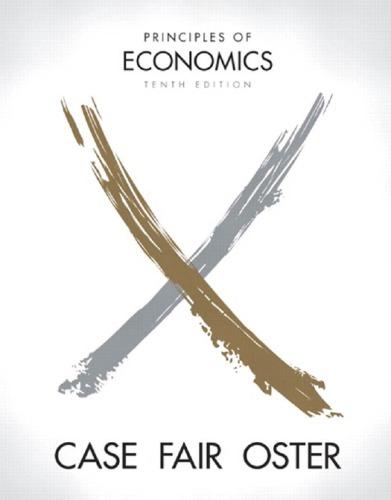For this problem, assume that Joe has $80 to spend on books and movies each month and
Question:
For this problem, assume that Joe has $80 to spend on books and movies each month and that both goods must be purchased whole (no fractional units). Movies cost $8 each, and books cost
$20 each. Joe’s preferences for movies and books are summarized by the following information:
a. Fill in the figures for marginal utility and marginal utility per dollar for both movies and books.
b. Are these preferences consistent with the law of diminishing marginal utility? Explain briefly.
c. Given the budget of $80, what quantity of books and what quantity of movies will maximize Joe’s level of satisfaction?
Explain briefly
d. Draw the budget constraint (with books on the horizontal axis) and identify the optimal combination of books and movies as point A.
e. Now suppose the price of books falls to $10. Which of the columns in the table must be recalculated? Do the required recalculations.
f. After the price change, how many movies and how many books will Joe purchase?
g. Draw the new budget constraint and identify the new optimal combination of books and movies as point B.
h. If you calculated correctly, you found that a decrease in the price of books caused Joe to buy more movies as well as more books. How can this be?
Step by Step Answer:

Principles Of Economics
ISBN: 9780593183540
10th Edition
Authors: Case, Karl E.;Oster, Sharon M.;Fair, Ray C






